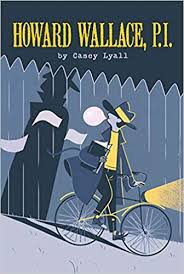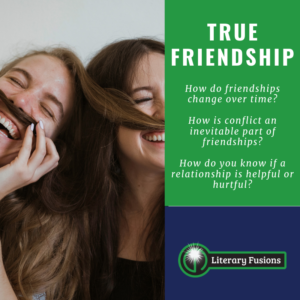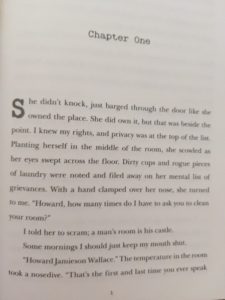Why I Picked It Up:
My loyal followers have joined me on my “Octopus Love” journey this year. On that journey, I reviewed Lyall’s book about the most famous octopus, Inky. When I saw that she had a new series for young students getting into novels, I quickly grabbed a copy of Howard Wallace, P.I.
Why I Finished It:
I finished it for two reasons. The first is that I love a mystery. I’m the person who can watch reruns of Murder She Wrote, Matlock, Magnum P.I. (yes – I know I’m dating myself) a million times without tiring. So, Howard Wallace, P.I. is a great mystery with some fun twists to figure out. Howard is a typical boy going through friendship drama and school stress. What makes him different is that he has his own business. He is the owner of Howard Wallace, P.I. In this first book in the series, a new girl, Ivy, pushes her way in as “Junior Detective” alongside Howard. Together they solve some minor cases, but the story follows them on a large case that brings in teachers, bullies, and frienemies.
Secondly, Lyall is hilarious! Her voice comes through in the characters, which makes them slightly snarky and quite witty. I giggled throughout.
Who I Would Give It To:
Elementary students who are ready to break out into the chapter book world, this book is for you! It is so hard to find an early reader that isn’t terribly boring. Those students looking to get into a fun mystery with few disclaimers, this book is for you!
Integration Ideas:
Theme
A major theme in this story is true friendship (page 221 gives great insight). Without being overly sweet, there is a great message about friendships and how they evolve and change. This is such a powerful discussion with students because they are struggling to navigate all their relationships. I would choose ONE of the following essential questions to help guide the discussion throughout the reading:
- How do friendships change over time?
- How is conflict an inevitable part of friendships?
- How do you know if a relationship is helpful or hurtful?
Mystery Genre (inference, character analysis, plot structure, drawing inferences)
When students read mysteries, they are being asked to draw conclusions. Meaning, the students are given pieces of information and they must contemplate a character’s honesty, guilt, motive, and character. This is character analysis at it’s finest! This particular mystery is great to teach how characters change and grow!
When students read a mystery, they must analyze all the normal parts of a fictional story; characters, setting, problem, and solution. The big difference in a mystery that students need to understand is that the problem is a case that needs to be solved. The characters are the detectives, the witnesses, and suspects. Sometimes I get super cheesy and turn my readers into detectives as well. Let’s face it, the reader is also a detective in the story. I will pass out mini magnifying glasses for my students. While there’s no educational value, it definitely gets them pumped to read and reminds them to be actively reading to solve the case. Depending on the age of the students, you might want to introduce red herrings.
As students read the story, they should maintain a log of clues that are found and possible suspects. A mystery novel is a great way to start literature circles in younger grades because they can get together to discuss what they think. I promise you, a natural conversation will ensue.
Reading – Visualization/ Writing – Word choice, Voice, and Description
I have to share the first page of this novel:
Oh, glorious voice! I love, love, love the way Lyall writes. There is an undertone of wit throughout this novel. Voice is so difficult to teach students. Many times it comes naturally when young writers just write freely without overthinking “the rules”. I pull pieces of the text for students to analyze. When we analyze the pieces, we share what is being described and how, specific words that are chosen, and how it lends to the author’s voice. Of course, we then practice emulating it in our own writing.
Here are a few ideas, but honestly they’re throughout the book:
- “Dust motes swam through the air with lazy abandon, and tiny shafts of light flickered as they fought through the years of grime on the front window. Decrepit merchandise lolled on the rickety metal shelves, any hope for another life given up long ago. Walking through Marvin’s store was like walking through a graveyard of questionable life choices.” (37)
- “The misfortune of having an older sister had taught me a number of hard and fast life lessons. Never to comment on fashion choices was in the top five.” (92)
Check out the author’s website for more ideas.
How will you use this book?









My son who is starting grade six in September just finished the first book. He loved it. I saw him smiling and laughing the whole way through. I like that the vocabulary is not dumbed down at all but the book is kid-friendly.
Yes! This book is very kid-friendly and treated all the topics delicately without losing the “kid connection”. Thank you so much for sharing, please let us know if he reads the next one!